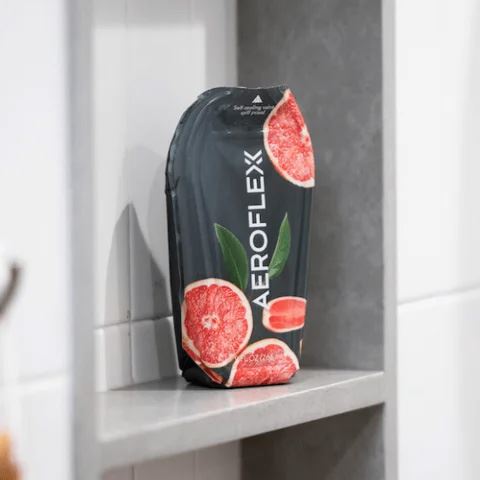

First impressions are powerful and potentially long-lasting. In the world of consumer goods, they happen in seconds. Before a shopper ever experiences a product, they judge it based on how it looks, feels, and stands out on the shelf or screen. Packaging is often the first and more important touchpoint. It influences perception, purchase intent, and long-term brand recall.
For CMOs and brand leaders, packaging has the potential to be a growth driver. The right packaging design can elevate brand equity, boost revenue, and optimize ROI. This article explores how packaging design shapes consumer behavior, enhances competitive positioning, and ultimately contributes to business success.
FMOT and SMOT: Your Moments of Truth
Procter & Gambler coined the term First Moment of Truth (FMOT) to describe the instant when a consumer encounters a product and makes a snap decision to buy or walk away. Packaging design is central to this moment by shaping how a brand is perceived in a crowded marketplace.
Just as important is the Second Moment of Truth (SMOT). This happens when consumers use the product, evaluate its quality, and decide whether it meets their expectations. A seamless experience from FMOT to SMOT can turn first-time customers to loyal customers who return to the brand again and again.
Packaging as a Versatile Growth Strategy
Strong packaging that results in successful FMOT and SMOT contributes to your overall strategy to drive growth. Here’s how:
Expanding Market Reach
Packaging innovations have the potential to attract diverse demographics and adapt to different retail environments. With tailored designs, brands can reflect local languages, cultural nuances, and regional preferences to connect with new audiences.
Packaging that provides custom shapes and sizes caters to convenience-driven consumers, enhancing usability and perceived value. This can be especially valuable if the packaging is optimized for both brick-and-mortar and e-commerce settings.
Operational Efficiency
In addition to benefiting consumers, smart packaging decisions can improve internal operations. Well-designed packaging can reduce material waste, optimize logistics, and align with corporate sustainability goals without compromising on branding or shelf appeal.
Brand Recognition
Consistency in packaging design strengthens brand identity, making it easier for consumers to recognize and recall products across different categories and retail environments. When consumers see cohesive packaging, they associate it with reliability and quality.
Storytelling Through Design
Packaging serves as a brand’s silent salesperson. It conveys messages about quality, innovation, and sustainability in an instant. The way a product is packaged can create emotional experiences, build anticipation, and tell a compelling brand story.
Provide a Consistent Experience in E-Commerce and Brick-and-Mortar Settings
These days, when shoppers have the choice to shop online or in-person, first impressions are shaped by the environment where the consumer encounters the products. In physical retail, visual and tactile engagement drive consumer choices; in e-commerce, brands can educate consumers through multiple assets, such as video, to support the sell.
Strong packaging strategies should ensure a seamless, recognizable brand experience in both channels.
Standing Out in Physical Retail
Brick-and-mortar retail relies on immediate visual appeal and physical interaction. Packaging needs to stand out on crowded shelves through bold colors, unique shapes, and striking typography that can make a product pop.
Shoppers make split-second decisions, so packaging should quickly convey key benefits, differentiating the product from competitors.
These days, many consumers research products online but make their final decisions in-store. To ensure consistency, packaging should reinforce the brand identity and messaging they’ve encountered online.
Adapting for E-Commerce
With hybrid shopping on the rise, brands need a packaging strategy that works both on the shelf and on a screen. Rather than touch and feel, online shoppers rely on images and descriptions. High-quality product photography and digital packaging previews help bridge the gap.
In e-commerce, the first physical interaction happens at home. Thoughtful packaging design enhances this moment, reinforcing brand perception and even encouraging social sharing.
Understanding Emotional Triggers in Packaging Design
In both online and in-store settings, consumers make purchasing decisions subconsciously based on emotional cues. Packaging elements like color, typography, and shape influence perceptions of quality, trust, and desirability:
- Different colors evoke specific emotions; for example, green is often associated with sustainability, while black conveys luxury.
- Sleek, modern fonts suggest innovation; while bold, traditional lettering can reinforce reliability and heritage.
Packaging shape can also impact consumer perception—sleek, ergonomic designs signal convenience and ease of use.
Drive Home Convenience and Ease of Use
At the end of the day, aesthetics are an important part of engaging with consumers—but functionality will keep them coming back. So make sure your packaging is the easiest, most durable product on the market before anything else.
A Strategic, Low-Risk Approach to Packaging Success
For CMOs and brand leaders, packaging decisions need to weigh the risks of balancing innovation with consistency and differentiation with familiarity. But the right packaging strategy doesn’t have to be a gamble. The AeroFlexx Pak offers a convenient, lower-risk solution that enables brands to refine their packaging without disrupting brand equity or operational efficiency.
With packaging format extensions, the Pak makes it easy to explore new designs, cater to consumer preferences, and expand product lines. Whether you’re launching a line extension or optimizing existing packaging, the Pak ensures a smooth transition while maintaining a strong first impression that drives consumer trust and loyalty.
